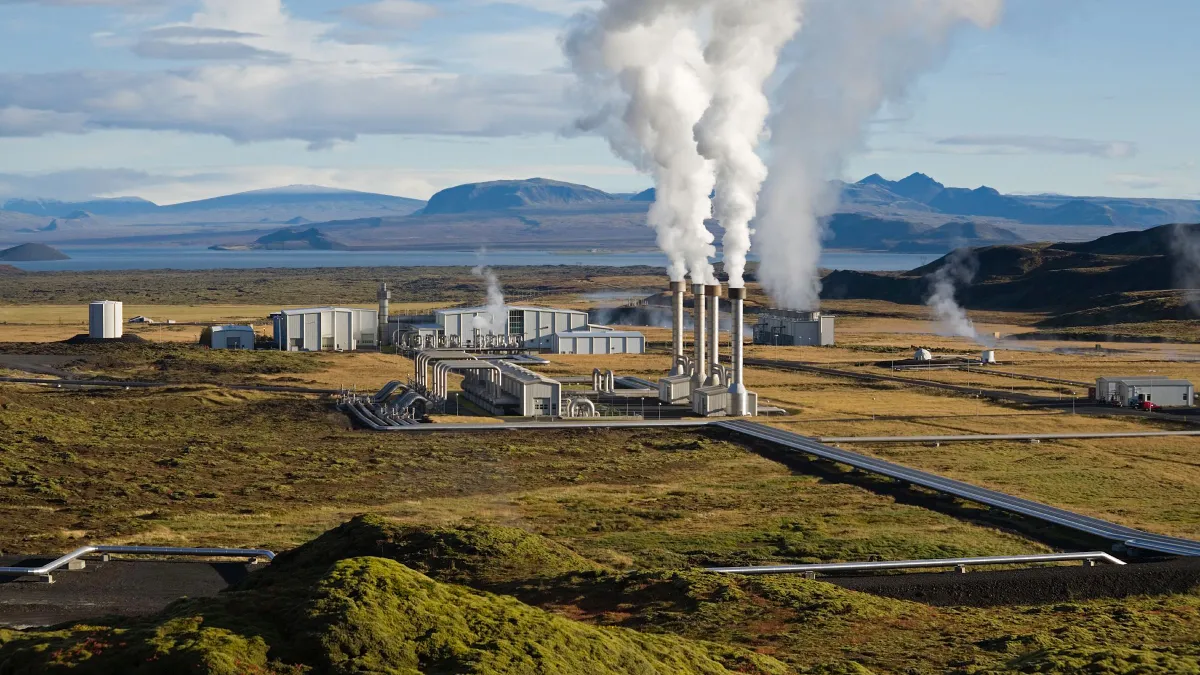Dive Brief:
- A new analysis of geothermal energy potential concludes that with improvements to technology and permitting timelines, the United States could increase geothermal power generation "nearly 26-fold" by 2050.
- The U.S. Department of Energy's analysis, released Thursday, calls geothermal an "untapped energy giant," and the agency believes installed capacity could reach 60 GW in the next three decades. Under a "business as usual" scenario, the report estimates 6 GW of capacity would be installed by 2050.
- Significantly accelerating deployment would require technology improvements to make enhanced geothermal systems (EGS) commercially viable, which the report says could provide the most growth in the electric sector relative to other geothermal resources.
Dive Insight:
DOE examined a range of scenarios that included improved timelines, enhanced technology, and geothermal's use in both the electric and heating sectors. No surprise, combining improvements to permitting with technology enhancements generates the most potential.
Speeding development timelines for geothermal projects could mean up to 13 GW of installed capacity by 2050, but there is even greater potential if improvements can be made to the technology. The DOE's report clarifies that only "a fraction" of geothermal's potential has been realized, due to both technical and non-technical barriers that constrain growth.
There are a range of challenges facing geothermal resources, including exploration and drilling as well as developing and managing geothermal resources.
Developing geothermal "is an inherently complex endeavor that carries greater fundamental risks and upfront costs compared to other renewable energy technologies," according to the report. "If the industry continues along business-as-usual projections, geothermal resources and technologies will remain a relatively small niche player in the energy sector."
There is "enormous untapped potential for geothermal energy in the United States," which would help develop a more diverse electricity generation mix and innovative heating and cooling solutions, U.S. Secretary of Energy Rick Perry said in a statemen
Outside of the electric sector, DOE found technology improvements could enable more than 17,500 geothermal district-heating installations nationwide, and 28 million households "could realize cost-effective heating and cooling solutions through the use of geothermal heat pumps."
DOE's report finds that with improvements to technology and regulations, geothermal capacity could make up 3.7% of total U.S. installed capacity in 2050, and produce 8.5% of the country's electricity generation.
"Technology improvements are on the critical path toward achieving commercial EGS," the report says. The analysis shows that relative to other geothermal resources, EGS resources "have the potential to provide the most growth in the electric sector," while also supporting significant growth within the heating sector.
The geothermal heat pump industry is also expected to reduce energy costs to residential and commercial consumers, "and provide greater reliability and consistency in heating and cooling options." Existing installed capacity is equivalent to geothermal heat pump installations in about 2 million households, the report found, but there is potential for much more.
"The GeoVision analysis determined that the market potential for [geothermal heat pump] technologies in the residential sector is equivalent to supplying heating and cooling solutions to 28 million households, or 14 times greater than the existing installed capacity," the report said.














